TL;DR
▶ FUE is the most prominent method for a hair transplant today as its technique of extracting individual hair follicles one by one allows us to minimize surgery scars and create more natural-looking hair transplants.
▶ FUE does not contain any distinguishing side effects that regular hair transplant surgeries do not already have, such as bleeding, infection, and redness.
▶ Due to its higher effectiveness than other methods like FUT, and its high difficulty requiring experienced surgeons, naturally, FUE has a higher price. On average, a 2000 graft FUE hair transplant in Turkey costs around $2500.
If you’re thinking of getting a hair transplant surgery, you probably have a ton of questions about the FUE technique.
Thousands of hair loss patients around the world go through FUE surgery every year with the majority of hair transplant clinics offering this technique as their primary option.
Is the hype worth it?
Is FUE better than FUT?
What are the risks?
Should you get an FUE hair transplant?
In this article, I’ll answer each of these questions and more as a dermatologist doctor that has done numerous FUE surgeries.
Table of Contents
What is Follicular Unit Extraction (FUE)?
FUE (Follicular Unit Extraction) is a hair transplant technique where the surgeon individually extracts healthy hair follicles from the donor area and implants them in the recipient area. Compared to other hair transplant types such as Follicular Unit Transplantation, the FUE process enables surgeons to do more precise harvesting and insertions during the surgery, which naturally lengthens the surgery time.
Due to this precision, this relatively new hair transplant technique offers near-perfect and natural-looking hair transplant results. When you look at the last 50 years, the need for the FUE technique becomes much more obvious:
Background
It all starts in the early 1950s when the first hair loss patient underwent the first modern hair transplant surgery with the technique called “hair plugging“.
I can assure you, the “hair plug” technique was as scary as the name would suggest. The surgeon would use a punch tool with a 4-millimeter area to punch out round-shaped tissues out of the donor area of your scalp and then implant these into the recipient area.
Although you wouldn’t technically be “bald” after the surgery, your hairline would be unnatural and your new hair would look like it belonged to a doll’s head, as you can see from the pictures below:
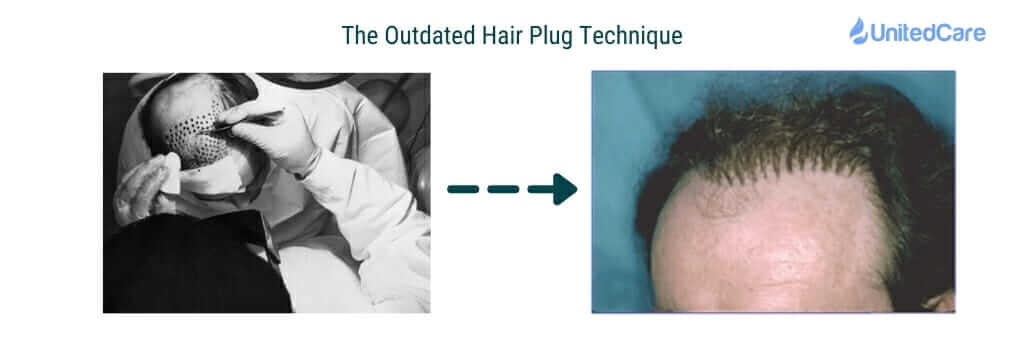
In the 1990s, a dermatologist doctor called Bobby Limmer developed a new technique that would soon replace hair plugging. FUT, available in many clinics today as a hair transplant technique, was an advanced iteration of the hair plugs.
In a FUT surgery, the physician harvests a strip of skin with follicular units from the donor area and then extracts the individual hair follicles from the harvested tissue. And following that, these hair follicles are carefully implanted into the recipient area around a hairline you and your physician decided on.
Follicular Unit Transplantation offered much better results with just one linear scar on the donor area. Compared to hair plugs, this new technique worked great with satisfactory results.
But was it perfect?
Having a linear scar that’s visible if you wear your hair short is not natural if you ask me; and Dr. Masumi Inaba, the inventor of FUE would agree.
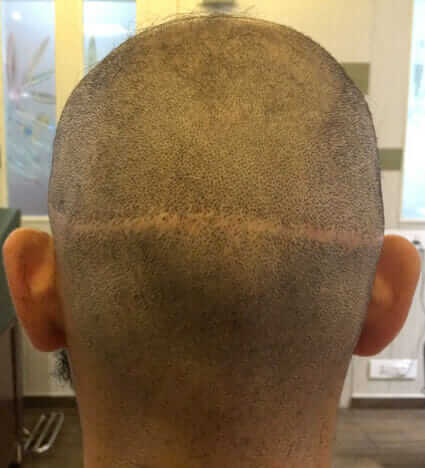
In 1988, Inaba introduced the FUE technique where a 1-millimeter needle was used to both extract and plant individual hair follicles in the scalp. And in 1989, the first FUE surgery was done by Dr. Woods.
Although FUT and FUE were developed around the same time, due to being simpler and requiring less skill and effort FUT spread faster than FUE and became the standard for hair transplantation.
But the dissatisfaction created by linear scars on the back of FUT hair transplant patients’ heads created more demand for FUE. FUE was perfect, with almost non-detectable scars (after proper healing) and natural-looking results.
And that’s what made Follicular Unit Extraction the leading hair transplant technique in the world.
What does the FUE Process look like?
Follicular Unit Extraction is no easy task, even for an experienced surgeon.
It requires more effort, precision, and experience to perfectly execute an FUE surgery; which is the main reason these types of hair transplant procedures last longer (around 4-8 hours).
Let’s see how we, hair transplant surgeons, proceed in an FUE surgery:
FUE Surgery
1- Consultation and First Examination
As with any hair transplant surgery, the FUE process begins with an initial consultation and examination session.
You schedule a time with (preferably) a dermatologist doctor, and they help you discover your options with your hair restoration journey. The first step is analyzing the causes of your hair loss and the extent of your balding.
An experienced dermatologist can quickly help you understand what’s going on with your scalp, what the reasons behind your hair loss are, and if you are eligible for a hair transplant or not. If you are, the physician provides you with your hair transplant options and if it’s all settled, you schedule a day for your surgery.
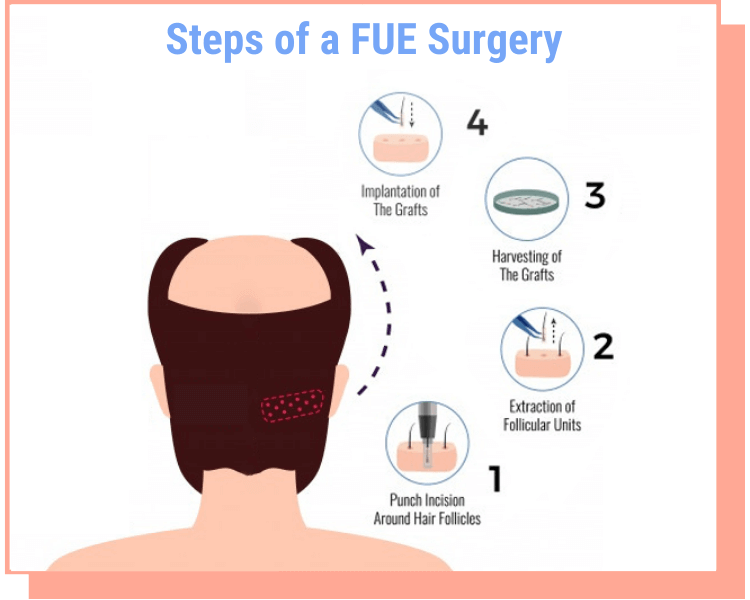
2- Coming into the Surgery
Before the actual surgery, you again meet with your physician. Your physician and their team inform you about how you will proceed, what your post-operation will look like, and what you should watch out for.
And then, your hair will be trimmed to provide space for the surgeon to precisely operate on your scalp, right before you decide on your new hairline with the surgeon. Once the new hairline is drawn on your scalp, local anesthesia will be applied to your scalp so you don’t feel anything.
3- Extraction
Once everything’s ready, we start extracting individual hair follicles from your scalp with the thin punching pen and store them in a proper liquid until implantation.
4- Implantation
After the required amount of grafts is harvested, the implantation process begins. We take the harvested hair follicles and start planting them in the recipient areas one-by-one.
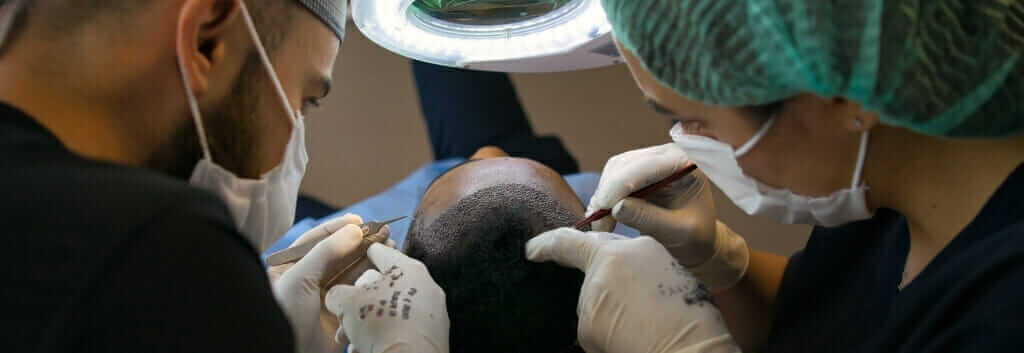
5- Wrapping Up
Once all the follicles are implanted, the surgical procedure is over. We apply bandages to the donor area, and then you depart from the clinic until the appointment for the first wash the next day.
The only difference between FUE and FUT is that in FUE, the hair follicles are extracted one-by-one, without interfering with your scalp skin. This decreases the risks of scars, and also the recovery time and post-operation pain.
Is FUE the best hair transplant?
Right now, FUE is the best hair transplant technique out there, as long as you are treated by a physician that knows what they’re doing, preferably a dermatologist.
FUE offers the best results, with less post-operation troubles, and the fastest recovery time of any hair restoration surgery.
FUE Hair Transplant Cost in 2022
The cost of a 2000 Graft FUE Hair Transplant can cost anywhere between $4000 and $20,000, depending on the region or country your clinic is in, the additional services, and the price range of the clinic.
Let’s quickly look at the cost of FUE in different countries and regions, to have more precise price ranges:
FUE Cost in the USA
In the US, the average cost of hair transplant with 2000 grafts using the FUE technique transplant costs around $7000-$15,000, which is more than most clinics in other parts of the world.
FUE Cost in Europe
In Europe, an FUE hair transplant with 2000 grafts will cost somewhere between €3000-€10,000 in an above-average clinic. Since Europe consists of many different regions too, the prices in different countries may vary.
FUE Cost in the UK
The UK has a more narrow range compared to the US and the rest of Europe, with prices ranging between £3999-£10,000 for 2000 grafts.

FUE Cost in Turkey
On average, a 2000 graft FUE hair transplant in Turkey costs around $2500, and will usually top out at $5000. This most often includes VIP transportation and 5-star-hotel accommodation.
The biggest reason for these much more affordable prices in Turkey is simple: the currency difference. The costs of running a hair transplant clinic in Turkey are significantly lower than the rest of the world, so it’s not uncommon for world-renowned surgeons to offer half the prices clinics in the US, the UK, or in Europe offer.
Not just for hair transplantation, Turkey is a significant and popular spot for any sort of health tourism due to a developed health sector that offers top-notch care for affordable prices.
Over 1.7 million tourists annually come to Turkey for health tourism.
Side Effects of FUE
So, FUE allows you to restore your natural hair and reverse hair loss with affordable pricing (if you do thorough research).
But can a hair transplant fail?
Aren’t there any side effects or risks?
As with any other medical procedure, there are.
Let’s quickly go through the side effects and complications that might arise after an FUE surgery:
Infection
Around less than 1% of patients might develop some sort of hair transplant infection around the scalp due to the operation. Redness, swelling, pain, and itching are the primary signs of such infections.
These infections, if you contact your dermatologist as soon as possible, can be treated with topical or oral antibiotics.
Shock Loss
Shock loss in the donor hair 3-6 months after the surgery is not an uncommon side effect. Most patients that go through a shock loss regrow the hair they shed in a short period of time.
Bleeding
Although really uncommon in FUE, bleeding on the donor and the recipient area of your scalp may happen after the surgery. This usually doesn’t mean you need to be alarmed, but if the bleeding doesn’t stop you should consult your dermatologist.
Swelling
Swelling on the scalp up to 7 days of your FUE surgery is normal, however, if it persists after 7-10 days you should consult your dermatologist.
Also, scabs followed by a hair transplant that fall out usually 7-10 days after the surgery are also completely normal.
Numbness
Moderate numbness on the scalp can last around a month. If it persists past 1 month or the extent of numbness increases, you should, again, consult your dermatologist.
Redness
Reddish skin around the scalp will also last for a month, and the scalp should return to its natural color after that.
Pain
Pain after an FUE surgery shouldn’t last more than 3 days, during which you will be using pain killers. In cases of troubling pain after the first week, your dermatologist might need to examine the situation.
Folliculitis
Folliculitis is a hair follicle inflammation that might arise after a few weeks to months following an FUE surgery. The symptoms include bumps that might look like acne appearing around follicles, and its cause is not clear at the moment.
Most Commonly Asked Questions Around FUE
Before I wrap up, I want to answer the questions I get asked a lot about FUE and how it works.
After treating thousands of hair loss and hair transplant patients, the questions that I believe to be the most crucial are:
How long do FUE transplants last?
If the surgery and post-operation care are successful, an FUE hair transplant will stay on your scalp permanently. This is because the transplanted hair from the donor area is much less sensitive to DHT, which causes Androgenetic Alopecia in the first place.
As long as you know what to and what not to do after your FUE surgery, you will keep a full head of hair for the rest of your life.
Will FUE leave scars?
It depends on your scalp and skin conditions, an FUE transplant can either cause minimal (much less visible compared to FUT) scarring which quickly heals after a time. Of course, the precision and the experience of the surgeon are of utmost importance if you want to have the perfect results.
Does FUE look natural?
With the right surgeon and care, FUE can look as natural as your own hair. As I’ve mentioned throughout the article, FUE was developed to minimize the artificial look and scarring that came with the hair plugging and FUT surgeries.
FUE often leads to a full head of healthy hair that restores your natural look.
FUE – Before and After Transformations at UnitedCare
And to end on a high-note, here are a few FUE hair transplants we’ve done here at UnitedCare:
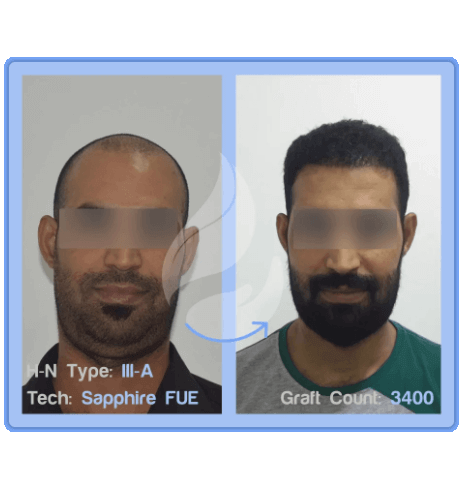
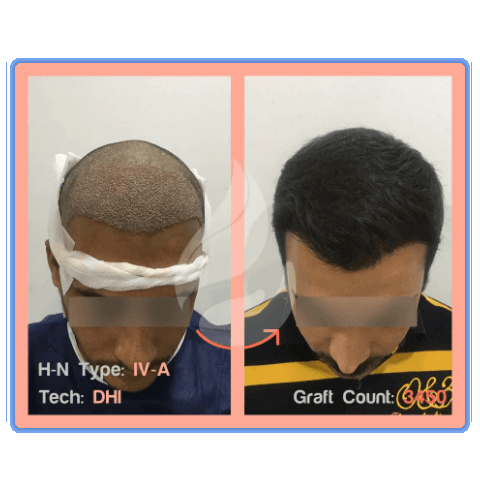


Be the hero of your own success story, with UnitedCare.
So, is an FUE Hair Transplant worth it?
100%, yes. FUE hair transplants are your best bet if you want natural-looking hair with minimal scarring on the donor region.
As a dermatologist doctor, I’ve been practicing FUE for the longest time, with numerous patients from different parts of the world who had different scalp and skin characteristics. With the right, holistic care, the end results should be perfect.
In fact, that is why we founded the UnitedCare Hair Transplant Clinic in the first place; to bring a holistic approach to hair transplantation.
Interested in seeing what we can do about your hair loss?
I offer free consultation: 👇
Restore your natural look with a Dermatologist:
UnitedCare and its expert dermatologist doctors provide you with a holistic approach to FUE surgeries.
Frequently Asked Questions (FAQs)
What is the meaning of FUE?
FUE refers to Follicular Unit Extraction, a type of hair transplant surgery that extracts individual hair follicles to minimize scarring that is caused in other hair transplant techniques like the strip method or the hair plug technique.
Is FUE better than FUT?
In many areas, FUE beat FUT: FUE offers faster recovery, causes tinier wounds on the scalp, provides much more natural-looking results and is less painful overall (the patient’s pain threshold is an important variable). Although it might take a couple more hours in surgery and need you to increase your allocated budget, the outcome is worth it.
How successful is FUE hair transplant?
With the right clinic, the success rate of an FUE hair transplant goes as high as 99%. That’s why I always suggest working with a renowned dermatologist for hair transplant surgeries.


Very interested in your FUE procedure. I have #2 diabetes. Cuts and abrasions usually take a longer time than usual. Will this procedure take a long time to heal or will it be problematic? Please let me know if you have done this procedure on diabetics. Thank you, Benjamin Cohen.
Hello Benjamin,
Having diabetes can prevent a person from undergoing any surgical operation.
When does diabetes become a hindrance?
If diabetes cannot be managed despite the drugs used (if his blood sugar is constantly high), surgery cannot be performed. According to my experience, in older and obese patients having high blood pressure and heart disease, the blood sugar level is hard to level.
If your blood sugar levels are within normal limits or slightly above the normal in the last six months, you can have surgery.
But if you have fasting blood sugar over 200mg/dL despite the treatment, no, you can’t because there will be the risk of complications such as delayed wound healing, infection.
I’ve done numerous hair transplant operations of diabetic patients. In all of them, the conditions I explained above were appropriate.
If you contact my clinic and provide blood test results, I can examine your unique condition for hair transplantation.
Hope this answer helps,
Good luck 🍀